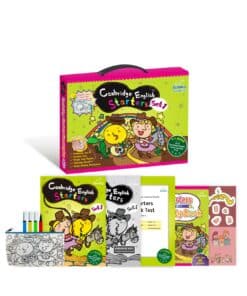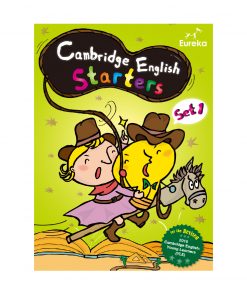Speaking Games for Primary and Secondary Schools
Hot Seat
Contributed by: Veronica
How to play:
(Variation on Charades with more speaking)
1. Divide students in two teams.
2. One student from each team sits at the front with their back to the board
3. Teacher projects a word (from ppt) OR writes a word in chalk OR sticks a flashcard on the board behind the student, so they can’t see it.
4. The two teams must try to describe the word without saying it for their teammate to guess.
5. First team to have their hot seater guess the word gets the point.
OR play team at a time with a timer.
OR set a timer, and if neither team gets it in time, the teacher gets a point.
Differentiation:
*Play in small groups of 4-6 students to make it less intimidating
– Increase or decrease the level of the vocabulary
– Review all the possible words before playing the game so students in the hot seat know which words might show up.
– Give a category that the words might be from (e.g Fruit, or Adjectives).
Materials: Least: chalk & Board ; More: ppt
Suggested age: P1 – P6
Time needed: 5-10 mins
Especially good for: Outgoing classes. Be cautious if using for shyer students
Back in the Bowl
Contributed by: Veronica
How to play:
(Variation on Charades with more speaking)
Round 1: Charades
– put the SAME words back in the bowl.
Round 2: Person at the front can only speak this time, no actions.
– put the SAME words back in the bowl
Round 3: Person at the front can only say one word this time.
Differentiation:
Round 1-2 are good for lower levels, round 3 for more advanced or older.
(Note: it sounds harder than it is! by the time you’re at round 3, the students should also be familiar with which words there are in the bowl, so worst case they can just randomly guess the words that they know are in the bowl!)
Materials: Paper and bowl / container
Suggested age: P4 – P6
Time needed: Flexible depending on how many words
Especially good for: Fun days, revision
Battleship
Contributed by: Veronica
How to play:
1. Show the board and explain that students will have “ships” (words) hidden from their classmate.
2. Pre-teach the sentence patterns “Is there a letter on A 5 ” “Yes there is! It is a ____” and “No there isn’t” and “Is the word ______”.
3. Practice finding coordinates with students.
4. Provide a list of words that the students should choose from for their board. Each student should select 4 words to write on their board.
5. Use the visualizer to act out a few rounds of a game with the LET, so that students understand when they should mark an ‘x’ or letter on their opponents card, and where they should look to answer their classmate’s question. In this game, students take turns to try to sink all of their opponents ships first. They win once they have found all of the other person’s words correctly.
6. Ask ICQs to help students understand the logic, for example “if I have guessed two letters in a row horizontally, which box should I ask next? should I try up, or next to it?”
Differentiation: Vary the number of words and difficulty of words they can choose from
Materials:
Printable battleship template such as: https://eurekahk.net/Tool_Battleship_Printable.pdf
(Consider making one set and laminate it so that students can reuse it many times with whiteboard markers)
Suggested age: P3 – P6
Time needed: 5-10 mins per game
Especially good for: Easy speaking for a fun game! One of the few games with my P6s that we got through the whole game without students reverting to Cantonese
Cross the River
Contributed by: Veronica
How to play: Very famous game. look online for variations on how to play.
1. Lay a row of flashcards on the ground. Add some pictures of sharks/alligators on the sides to make it more intense (careful: some kids believe it too intensely and become scared. look out for this!).
2. Students must step on the flashcards and say the words to cross from one side to the other.
3. If students are confident enough, you can tease them by pretending the sharks are coming.
TIP : this game doesn’t have to be isolated words! Can be great for extended speaking practice.
For example, self introductions. first card: “My name is ____” Second card: “I am ___ years old” etc
By the end they’ve practiced saying 4- 5 sentences
Differentiation:
+ Encourage them to go faster, add extra cards for their turn, or hide the written form of the word on the flashcard.
– Help them to remember, don’t tease about the sharks coming. Turn to the class to help for words they’ve forgotten, “Can we help Julia? What is this one?” then allow the individual to repeat after the class has said it and move on.
Materials: Flashcards / Images of sharks (optional)
Suggested age: P1 – P3
Time needed: 10 mins
Especially good for: Fixing individual pronunciation problems / Extended speaking
Remember It
Contributed by: Veronica
How to play:
1. Students sit in a circle. The teacher holds up one colour marker and asks a student to decide which word or phrase or question it will be (for example: “potato” or “I am 5 years old” or “How are you?”)
2. Teacher passes the marker around the circle. As it is passed, each student must repeat the word, phrase, or question
3. The teacher slowly introduces more and more markers, each with different colours. Students need to remember what word/phrase/question is associated with each colour.
4. Play may continue either by passing multiple colours around the circle at the same time, at a faster pace, or by having all markers put in the middle and on the count of 3 students must grab one colour. Anyone who remembers the associated word/phrase/question gets one point.
Differentiation:
– Less markers, simpler words (apple/what is your name)
+ More markers, harder questions (what do you think? what is your favourite hobby?)
+ If playing in groups with a whole class, one stronger student may be assigned to lead the game in the teacher role.
Materials: Markers, crayons or popsicle sticks of different colours
Suggested age: P4 – P6
Time needed: 5-15 minutes
Especially good for: Small groups, 4-6 students fluency! for phrases and questions, students will copy teacher’s pattern of saying it to help memorize, which allows for drilling with fluency.
Yes/No Questions
Contributed by: Veronica
How to play:
1. Students must ask the teacher yes or no questions. Every time the answer is ‘yes’ the student and/or group gets 1 point. This is easiest explained by providing a simple example, e.g. “Do you have brown hair?”
2. Halfway through, switch the rule – any time the answer is ‘no’ the students get 1 point.
Questions may only be asked once for each version!
Students will quickly become creative when the simple questions (i.e. are you a teacher) get used up.
Differentiation:
+ Play solo (with small groups)
– Play in teams
Materials: n/a
Suggested age: P1 – P6
Time needed: 5-10 mins
Especially good for: Encouraging students to think creatively ; may be played as a group (whole class) or individuals (up to 10 students).
What’s Different?
Contributed by: Veronica
How to play:
1.Pre-teach the sentence patterns needed. “Is it your____” for beginner English (e.g. Is it your watch?) OR “I think you… your …” for more advanced (e.g. I think you moved your watch onto your left hand)
4 students are selected to come to the front.
2. 1 student is sent outside to the hall as the detective. While the detective is outside, each of the 4 students should change something about their appearance.
3. Detective is invited back in, and must guess which things changed on each person.
OR:
4-6 people are sent to the hall to change their appearance (with LET supervision)
Then, the whole class are the detectives (possibility of giving points to the first team to guess)
Differentiation: n/a
Materials: n/a
Suggested age: P1 – P6
Time needed: 5-10 mins
Especially good for: Higher order thinking, lessons on appearance vocabulary
Dice Bomb
Contributed by: Veronica
How to play:
1. Students are split into 2 teams and the teacher explains the points system.
2. Ask the first team any question relevant to the lesson topic (great for revision practice!). Once the team answers correctly, they send a representative to the front to draw a number/ roll the dice. Teacher marks the points down on the board, adding the scores up as the game progresses.
3. Continue alternating between the teams and leave the points up to chance!
Points: If 1 is rolled – 1 point, 2 is rolled – 2 points, etc. 6 is rolled – Bomb! Points go to 0.
4.Half way through the game, add another rule to the numbers. For example, teams switch points if a 2 is rolled.
Differentiation:
– / + easier/harder questioning, more or less support in finding the answer
Materials: Dice, or 6 scraps of paper
Suggested age: P1-P6
Time needed: 15-30 mins
Especially good for: High energy/adding excitement to a boring topic
3 Hints Quiz
Contributed by: Veronica
How to play:
1. One student may choose any word from the recent vocabulary.
2. They must think of 3 hints to give for that word.
3. Other students must guess what the word is.
Differentiation:
Some words are harder to describe than others. teachers should check in advance which vocabulary words they are letting students choose from
Materials: Paper to write the hints
Suggested age: P1 – P6
Time needed: 3 mins to prepare ; 5-10 minutes for the game
Especially good for: Revision, reducing teacher’s talking time
Running Dictation
Contributed by: Veronica
How to play:
1. Attach a few words or sentences to the wall around the classroom.
2. In groups of 3-4, students send 1 runner to memorize as much of the text as they can.
3. The “runner” returns to the group and says as much as they can.
4. The “writer” in the group writes, while the “corrector” holds the erases and checks if the writer makes any mistakes (spelling or punctuation).
5. The runner can either return multiple times, or the roles in the group switch.
Safety note: Be very clear that the runner must walk and only the runner can get up. Check with ICQs: “How many people from each group can be standing?”
Differentiation:
Many ways to vary this!
Easier: same easy, short text (multiple copies so that not all student groups are crowding around the same place)
Medium: paragraph
Hard: students have a sheet of questions, and must scan the short paragraph of text for the answer.
Variation: Instead of posting the text on the walls, have other students hold it and be “readers”!
(e.g I did this once where all P2 groups had a worksheet with the 7 days of the week and a blank next to it. The runner had to ask the reader “What does Wally do?” and the reader would read a text “On Mondays, Wally likes to play badminton and go swimming”. They would return to their group to share that for monday they should write badminton and swimming.).
Materials:
Tag/necklace/lanyard/sticker to indicate who the “runner” is. VERY important to emphasize only the person with this can move around the room!
Suggested age: P1 – P6
Time needed: 25 minutes for first play (with explanation) ; 15- 20 mins afterwards
Especially good for: Integrated skills – Reading & Writing
Say it!
Contributed by: Veronica
How to play:
1. In teams or pairs, students brainstorm a list of words on a topic.
2. When a student is presenting on that topic, the others have to listen and tick any words they correctly guessed.
After students have played a few times, you’ll notice vocabulary starts to become more varied as they strive to think of words their classmates won’t predict!
Differentiation: n/a
Materials: n/a
Suggested age: P1 – P3
Time needed: 10 mins
Especially good for: Vocabulary learning
Bomb
Contributed by: Veronica
How to play:
1. Cut out a list of vocabulary words, phrases, question prompts, etc that you want students to practice with. Alternatively ask them to write their own! One idea per paper.
2. Insert a few “bomb” cards into the mix.
3. Students take turns pulling out a paper. They must read out the word, answer the question, etc. If they succeed, they keep the paper to mark one point.
If a student pulls out the ‘bomb’ card – they must put all their points (cards) back in the mix!
Teacher chooses a moment to end the game at which point all students count up their points. This works well in small groups.
Differentiation: n/a
Materials: Prompt cards / bomb cards
Suggested age: P4 – S1
Time needed: 5-25 mins
Especially good for: Exam revision, competition
Slow read
Contributed by: Veronica
How to play:
1. Put words in a bag (or ask students to write their own cards). One word per card.
2. Taking turns, one student will pull out a word and read it out loud as slowly as they can, making sure to sound it out phonetically.
3. The other players must try to guess what word it is. As soon as they know, they should shout out the word. They get the card ! (1 point)
4. Game ends when teacher announces. All players count their total points.
Differentiation:
*Can be combined with bomb game above to add an element of chance. This helps to neutralize any large ability differences and keep everyone with a chance to win the game.
Materials: Vocabulary cards
Suggested age: P3 – S4
Time needed: 10-25 mins
Especially good for: Vocabulary consolidation






